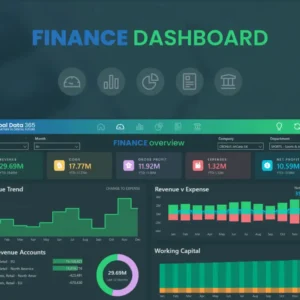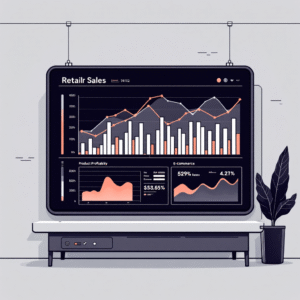Table of Contents
Togglescale across your business. This in-depth guide explains how Free, Pro, and Premium (including Premium Per User) actually work, what each license unlocks, and a simple decision framework so you can pick with confidence—whether you’re a solo analyst, a growing team, or an enterprise rolling out BI at scale.
If you’ve ever asked “Which Power BI license do we really need?”, this guide is for you. We’ll keep it practical: what you can do, who needs a license, deployment patterns, common pitfalls, and budget-savvy tips to avoid overpaying. We’ll also give you comparison tables, a quick decision tree, and a few upgrade signals to watch for.
By the end, you’ll know exactly which tier matches your sharing needs, governance standards, model sizes, and growth plans. Let’s get you to the right answer, fast.
Talk to a Power BI licensing specialist: info@powerbigate.com | +1 281 631 3767 | Book a Google Meet (30 min): https://calendly.com/bilalahmad3/30min
Snapshot: What each license is for (at a glance)
Free: Personal analysis and learning. Create reports for yourself in “My Workspace.” No organizational sharing.
Pro: Team collaboration. Publish to shared workspaces, share dashboards, app deployment, and peer-to-peer collaboration. All authors and viewers of Pro-backed content need Pro licenses.
PPU (Premium Per User): Pro plus many Premium features for a single user—larger models, AI features, paginated reports, deployment pipelines. Both authors and viewers must have PPU to access PPU content.
Premium Capacity: Dedicated capacity for your tenant (workspace level). Free viewers can consume content hosted in Premium-backed workspaces. Best for broad distribution, large/complex models, and enterprise governance/SLA.
Quick comparison (capabilities)
| Capability | Free | Pro | PPU | Premium Capacity |
|---|---|---|---|---|
| Create in Desktop & view in My Workspace | ✔ | ✔ | ✔ | ✔ |
| Share to others (workspaces/apps) | ✖ | ✔ | ✔ (PPU-to-PPU) | ✔ (to Free users) |
| Consumers need paid license | N/A | Yes (Pro) | Yes (PPU) | No (Free can view) |
| Larger dataset sizes & enhanced refresh | ✖ | Limited | ✔ (higher than Pro) | ✔ (highest) |
| Paginated reports (RDL) | ✖ | ✖ | ✔ | ✔ |
| Deployment pipelines | ✖ | ✖ | ✔ | ✔ |
| Dedicated capacity / performance isolation | ✖ | ✖ | ✖ | ✔ |
| Enterprise features (multi-geo, governance at scale) | ✖ | ✖ | Partial | ✔ |
Need help mapping features to your roadmap? info@powerbigate.com | +1 281 631 3767 | https://calendly.com/bilalahmad3/30min
The core difference: Create vs share vs scale
Think of licensing across three stages:
Create: Anyone can build with Desktop. Free lets you explore alone.
Share: The moment you want to share to colleagues in a shared workspace or app, you’re in Pro (or PPU) land.
Scale: If you want hundreds or thousands of read-only consumers—especially executives who shouldn’t need paid licenses—Premium Capacity lets free users view content hosted on capacity.
Power BI Free: When it’s enough (and when it isn’t)
Best for: Individual learning, prototyping, and personal analytics.
What you can do:
• Build reports in Desktop and publish to My Workspace.
• Connect to most data sources, build models, and run personal refreshes.
Limitations:
• No organizational sharing from My Workspace.
• No access to shared workspaces or apps created by others (unless your org uses Premium Capacity and grants access via apps hosted on capacity—consumption experience varies by tenant policy).
Upgrade signals: You need to collaborate in a shared workspace, schedule robust refresh, or share with stakeholders routinely.
Power BI Pro: The default for teams
Best for: Small to mid-sized teams where most people who view dashboards also build or interact.
What you get:
• Publish to shared workspaces and Power BI Apps for managed distribution.
• Share dashboards and reports with users who also have Pro licenses.
• Collaborate with versioned datasets, lineage view, and standard governance.
Viewer rule: To consume Pro-backed content, both authors and viewers need Pro. If a stakeholder is Pro-less, they can’t view unless the workspace is backed by Premium Capacity.
Upgrade signals: Too many casual viewers to justify paying Pro for all; models are hitting size/performance limits; you need paginated reports or advanced DevOps.
Premium Per User (PPU): Individual premium features without capacity
Best for: Power users who need premium-class features but don’t need tenant-wide capacity.
What you get beyond Pro:
• Larger dataset sizes and higher refresh frequency.
• AI features (e.g., advanced AutoML), paginated reports, deployment pipelines, and other premium capabilities at the user level.
Viewer rule: To view PPU content, both authors and viewers must have PPU. There is no “free consumption” with PPU.
Upgrade signals: You or a small group need premium features (RDL, pipelines, larger models), but org isn’t ready for full capacity.
Premium Capacity: Enterprise-scale BI with governance and performance
Best for: Broad organizational rollout and executive consumption at scale.
What you get:
• Dedicated capacity (performance isolation), ideal for many concurrent users.
• Host workspaces so that Free users can view content via apps—great for large audiences.
• Larger models, faster refresh windows, paginated reports at scale, multi-geo options, and advanced governance.
Viewer rule: Free viewers can consume capacity-backed apps/reports if permissions are granted. Authors typically still need Pro to publish unless you manage with capacity-assigned authoring workflows.
Upgrade signals: Hundreds/thousands of viewers, strict SLA/governance, heavy refresh windows, centralized IT ownership.
Decision framework: “Which Power BI license should we choose?”
Use this quick decision tree:
-
How many people will consume reports monthly?
• < 20 and most are contributors → Pro for everyone.
• 20–200 with many read-only viewers → Consider Premium Capacity if Pro costs scale badly; evaluate PPU if premium features are needed but audience is small and can all be PPU-licensed.
• 200+ mixed audience → Premium Capacity. -
Do you need premium-only features (paginated reports, deployment pipelines, bigger models)?
• Yes, but audience is small and technical → PPU for those users.
• Yes, and audience is broad → Premium Capacity.
• No → Pro likely suffices. -
Do stakeholders refuse to manage licenses for casual viewing?
• Yes → Premium Capacity so free users can view.
• No → Pro (or PPU if you need those features). -
Model size/refresh strain today?
• Hitting Pro limits → PPU or Premium Capacity, plus data modeling optimizations.
• Fine today → stay Pro and optimize.
Minimalist recommendation matrix
| Situation | Recommendation | Rationale |
|---|---|---|
| Solo analyst learning | Free | No sharing needs |
| 10-person finance team | Pro for all | Simple, cost-effective |
| 50 users, 40 are read-only | Premium Capacity or cost model | Free viewers reduce per-head cost |
| 8 power users need paginated + pipelines | PPU for those 8 | Premium features without capacity |
| 1,000 employees need read-only access to KPIs | Premium Capacity | Scale + governance |
“Which license?” one-glance chart (text-visual)
Free → (personal use)
Pro → (team share: authors & viewers both paid)
PPU → (Pro + premium features per user; viewers must be PPU)
Premium Capacity → (enterprise scale; free viewers allowed on capacity-backed content)
Cost control tips and common pitfalls
Tips
• Start Pro for creators. Don’t over-license casual viewers—pilot Premium Capacity only when adoption proves out.
• If only a handful need premium features, PPU is cheaper than capacity.
• Use Apps for distribution; they reduce ad-hoc sharing chaos and simplify permissioning.
• Archive cold workspaces and disable scheduled refresh on unused datasets.
Pitfalls
• Mixing PPU and Pro without a plan: PPU content is invisible to Pro-only viewers.
• Assuming Free can view anything: they only can if the workspace is Premium-backed and access is granted.
• Oversizing models due to poor design: optimize columns, use star schema, summarize facts, and consider incremental refresh.
• Underestimating data refresh windows: coordinate heavy refreshes to avoid peak usage.
Governance, data model size, performance, and refresh
Governance: Premium Capacity enables stricter tenant-level controls, multi-geo residency, and centralized governance. Pro supports workspace-level governance suitable for departmental BI.
Data model size: Pro has smaller dataset limits; PPU raises limits; Premium Capacity provides the highest. Always design lean: star schema, numeric surrogate keys, remove high-cardinality text, incremental refresh.
Performance: Dedicated capacity isolates workloads and supports higher concurrency. Even on Pro/PPU, performance gains come from model design, aggregations, and composite models.
Refresh: PPU and Premium increase refresh frequency and parallelism. Use incremental refresh with RangeStart/RangeEnd parameters to keep daily loads fast and reliable.
Deployment patterns that work in the real world
Pattern A: Pro-only team (10–25 users)
• All creators and consumers have Pro.
• Shared workspace for Dev/Test, App for Prod.
• Weekly refresh; deployment pipeline optional.
Pattern B: Small PPU pod (5–15 power users)
• Creators and consumers in that pod use PPU.
• Paginated reports for finance close packs; pipelines for Dev→Test→Prod.
Pattern C: Enterprise with Premium Capacity
• Central BI team owns capacity.
• Business units publish to capacity-backed workspaces; free users consume via Apps.
• Multi-geo capacities for data residency; incremental refresh on large facts; paginated reports for board packs.
FAQs (plain-English answers)
Q1: Which Power BI license should we choose?
Start with Pro if you’re under ~20 users and most are contributors. Choose PPU if you specifically need premium features (paginated reports, deployment pipelines, larger models) for a small circle and can license both authors and viewers with PPU. Pick Premium Capacity if you have a large read-only audience (hundreds+), need dedicated performance and enterprise governance, or want free users to consume content.
Q2: Can Free users view shared content?
Only when the workspace is Premium Capacity-backed and they’ve been given access (typically via Apps). Free cannot consume standard Pro-backed workspace content.
Q3: Do viewers need Pro if authors have Pro?
Yes. For Pro-backed content, both authors and viewers need Pro.
Q4: What’s the difference between PPU and Premium Capacity?
PPU gives premium features to individual users; everyone accessing PPU content must have PPU. Premium Capacity gives dedicated compute at the workspace/tenant level and lets Free users view capacity-backed content.
Q5: We only need paginated reports for month-end. Do we need Premium Capacity?
Not necessarily. PPU may suffice if the audience is small and you can license those users with PPU.
Q6: Our dashboards are slow and refreshes time out. Is that a licensing or modeling issue?
Often modeling and refresh design first. Capacity helps with concurrency and headroom, but you should also optimize schema, reduce cardinality, and adopt incremental refresh.
Q7: Can we mix Pro and PPU users?
Yes, but PPU content is only accessible to PPU users. Keep clear separation of workspaces (Pro vs PPU) to avoid confusion.
Q8: Do we need Pro for publishing to Premium Capacity?
Commonly, authors use Pro to publish to capacity-backed workspaces. Your tenant admin can define specifics, but budgeting for author Pro licenses is a safe baseline.
Q9: Is Premium Capacity only for huge enterprises?
No. It’s for any org where the math works out: many read-only viewers + need for governance/performance.
Q10: How do we future-proof our choice?
Design great models, adopt Apps for distribution, and keep licensing modular: start Pro, add PPU for specialist needs, and move to Capacity when consumption scales.
Key Takeaways
• Free = individual learning; no organizational sharing.
• Pro = team collaboration; authors and viewers both need Pro.
• PPU = Pro + premium features at user level; all viewers must also have PPU.
• Premium Capacity = enterprise scale; free users can view capacity-backed content; best for wide distribution.
• Decide based on audience size, feature needs, model size/refresh, and governance.
• Start lean; scale up only when adoption and requirements demand it.
Summary
Selecting a Power BI license is about matching how you share and how far you scale. Use Free for personal learning. Use Pro as your default for teams who create and consume together. Layer in PPU when a small circle needs premium features like paginated reports and pipelines. Graduate to Premium Capacity when you want to unlock organization-wide viewing, enterprise governance, larger/faster models, and predictable performance. Get the model right, publish through Apps, monitor refresh, and your rollout will scale smoothly—and cost-effectively.
Bonus: Lightweight “license choice” checklist
-
We have < 20 collaborators and few passive viewers → Pro for everyone
-
We need paginated reports or deployment pipelines for a small audience → PPU for those users
-
We have 300+ passive viewers and want free consumption → Premium Capacity
-
Our models are hitting Pro limits even after optimization → PPU or Premium Capacity
-
We want strict governance, predictable performance, or multi-geo → Premium Capacity
Example deployment table (what to set up next)
| Step | Pro | PPU | Premium Capacity |
|---|---|---|---|
| Create Dev/Test/Prod workspaces | ✔ | ✔ | ✔ |
| Publish via Apps for distribution | ✔ | ✔ | ✔ (to Free viewers) |
| Set incremental refresh | ✔ (within limits) | ✔ (larger ranges) | ✔ (largest ranges) |
| Add paginated reports | ✖ | ✔ | ✔ |
| Implement deployment pipelines | ✖ | ✔ | ✔ |
| Onboard Free viewers | ✖ | ✖ | ✔ via capacity-backed Apps |
Want a tailored rollout (Pro, PPU, or Capacity) with governance, deployment pipelines, and cost controls? info@powerbigate.com | +1 281 631 3767 | https://calendly.com/bilalahmad3/30min
Related reading on PowerBIGate (internal links)
-
Essential Financial KPIs Every Power BI Dashboard Should Track
-
10 Essential Financial KPIs Every Power BI Dashboard Should Track
-
Home: https://powerbigate.com/
Final Call-to-Action
Still unsure which license fits your roadmap? Get a quick, vendor-neutral recommendation and a rollout plan. Email info@powerbigate.com or call +1 281 631 3767. Prefer to meet? Book a 30-minute Google Meet: https://calendly.com/bilalahmad3/30min.







